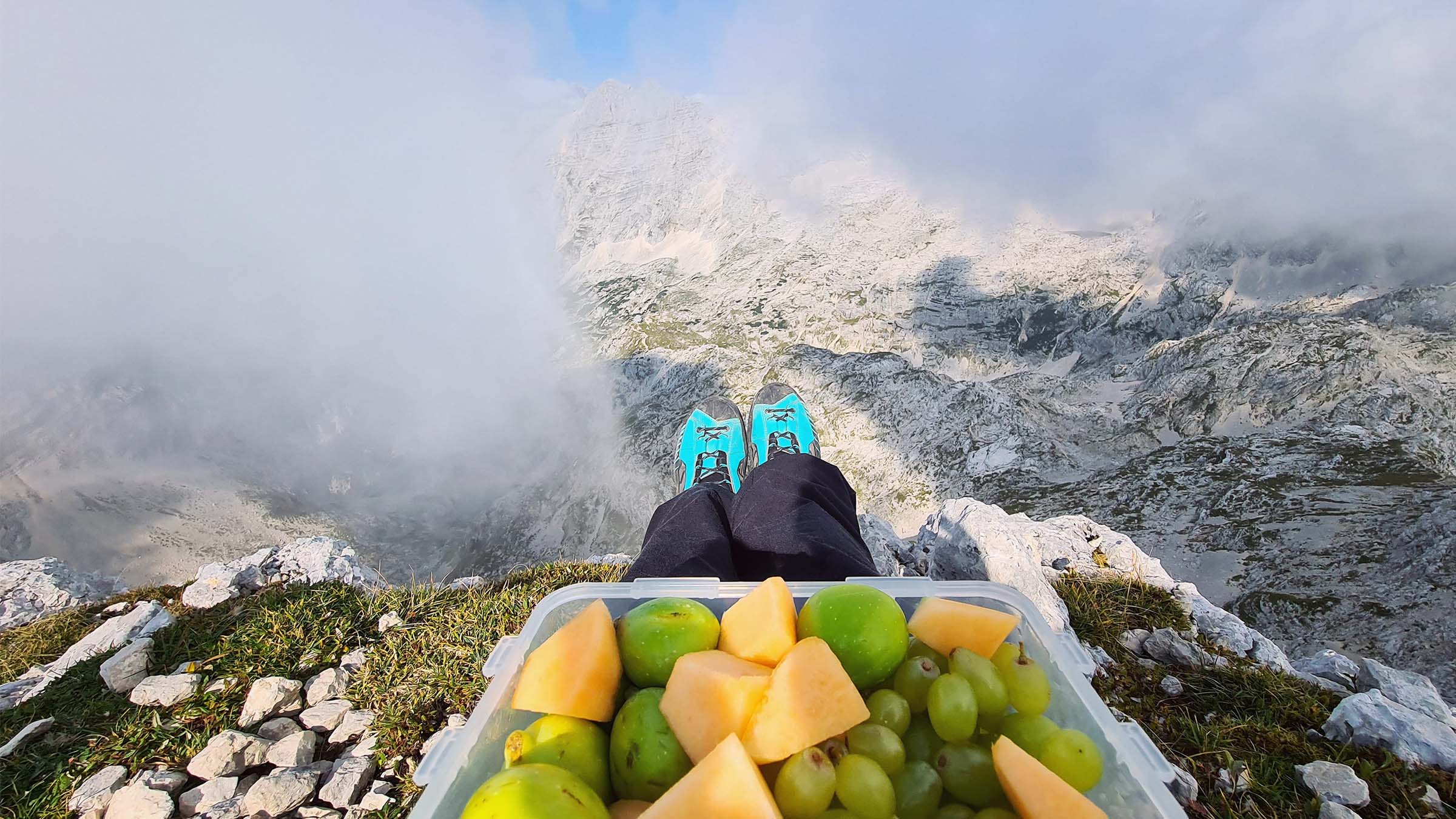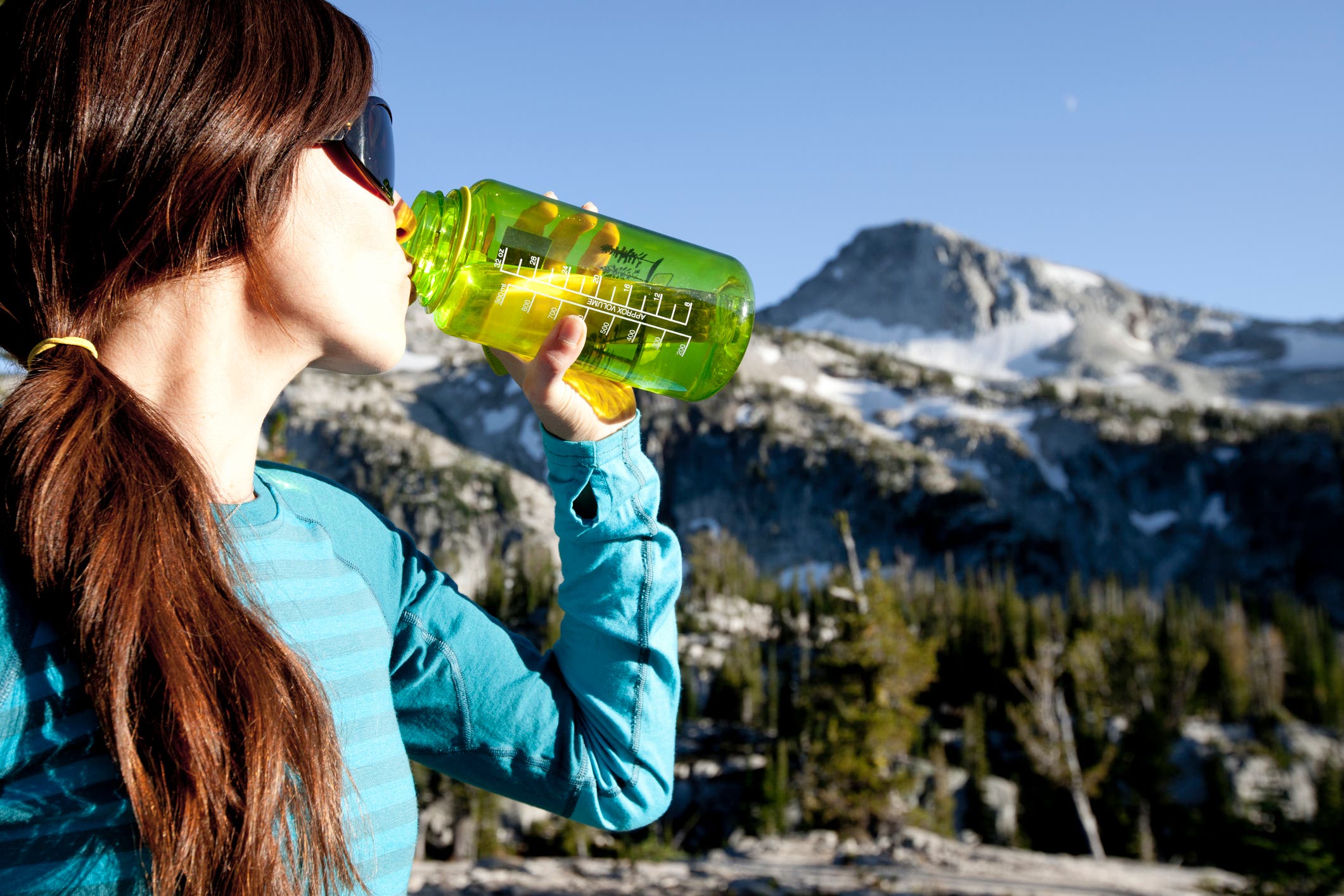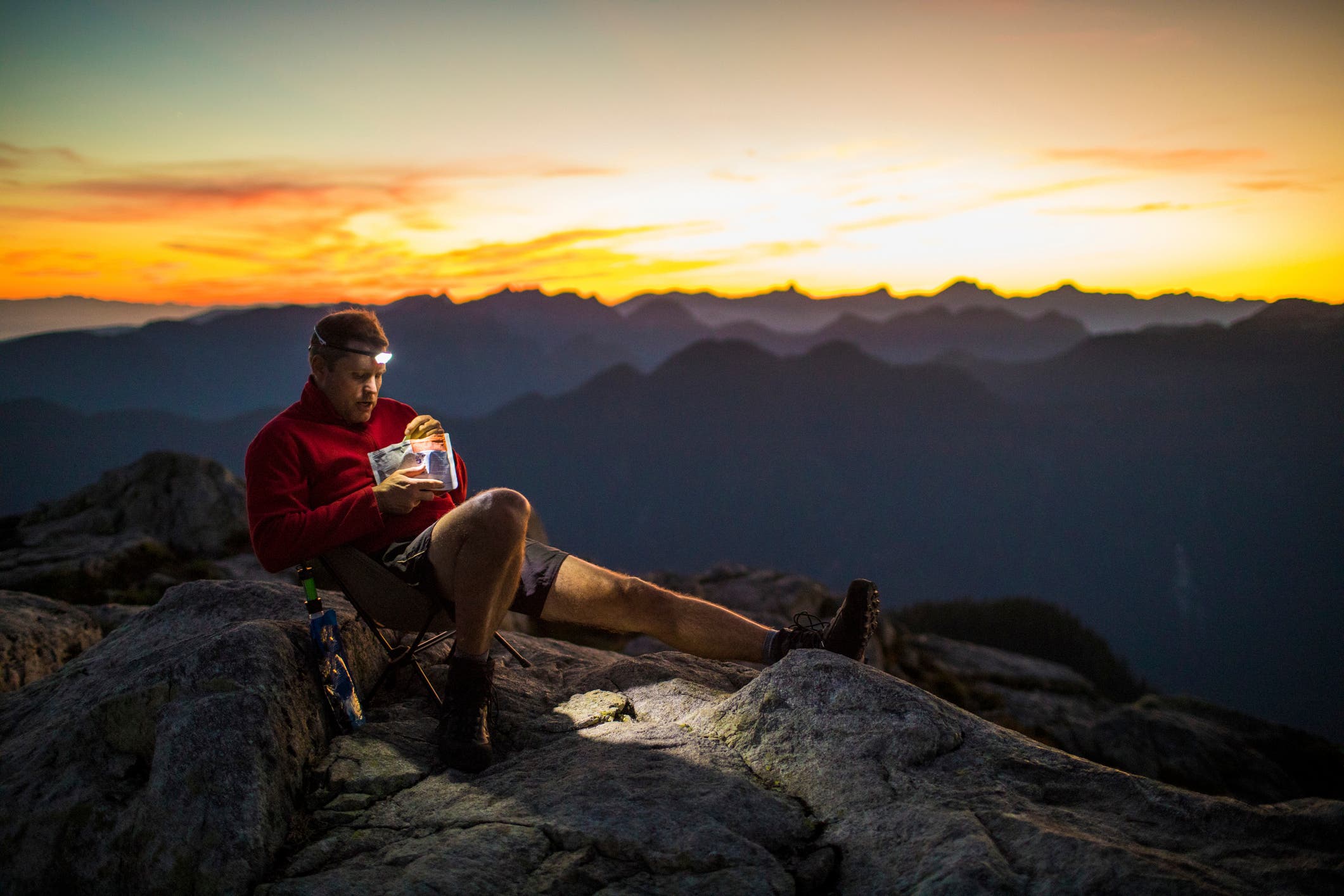Backpacking Nutrition: What Hikers Need to Know About Eating on the Trail

(Photo: Metka Razdevsek / EyeEm via Getty Images)
Fueling your body properly is a key part of any hike. If you have a strong stomach and you’re only going on a short hike, you can eat almost anything. Head out for multiple days, however, and you’ll want to plan more into account proper backpacking nutrition can lead to bonking (where your body crashes due to a lack of energy), hanger, dehydration, and a plain bad time. But when you give your body what it needs, you’ll feel strong and comfortable on the trail. Follow these rules of backpacking nutrition and you’ll be at your hiking peak.
Drink before you’re thirsty.

Yes, hydration is a part of nutrition. Thirst is an early symptom of dehydration: By the time the thirst response is activated, you’re already 2 to 3 percent dehydrated. This will diminish high-intensity endurance by 10 percent. Start your hike hydrated by consuming 14 to 22 ounces of water about 2 hours before exercise. During the hike, drink to thirst: A good goal is to drink 6 to 12 ounces of water or sports drink every 15 to 20 minutes. Recover by drinking 16 to 20 ounces of water or sports drink every hour for a few hours after the hike to fully rehydrate.
Fuel with carbs.
Carbohydrates are the body’s preferred primary energy source while hiking and backpacking, since they’re easier for your body to process than fats or protein, meaning they’re less likely to put you at risk of an upset stomach. Backpacking nutrition wisdom holds that you should eat 30 to 60 grams (120 to 240 calories) of carbohydrates per hour to improve strength and endurance and delay fatigue. If you don’t consume enough carbohydrates, the body will burn muscle protein and stored body fat. A few examples of good carb choices: energy gels or shot blocks, sports drinks, dried fruit, and bars.
Eat breakfast

Starting the day with a good breakfast will contribute to improved performance (versus hitting the trail in a fasting state). The meal should be low in fat and fiber, high in carbohydrates and contain some protein. The goal is to eat enough to provide fuel while allowing enough time to digest the food before hiking. Aim for 300 to 500 calories at least an hour before hiking. Nutritious hiking breakfasts options include oatmeal with dried fruit, a scrambled egg and cheese breakfast burrito on a tortilla, or granola with powdered milk. If you need to wake up and hit the trail right away, fresh fruit or an energy bar are good options to provide a quick boost.
More for Outside+ members: A Nutritionist Judges Your Favorite Hiking Foods
Eat every hour.
The body can only process a few hundred calories per hour while exercising. This amount will keep energy levels constant and won’t overload the stomach. Consuming too many calories at one time diverts blood away from working muscles in favor of digestion. Some backpackers do better with gels while others tolerate carbohydrate drinks; some can eat just about anything and power uphill. Experiment during your training to see which ones your stomach tolerates best.
Consume electrolytes when hiking in the heat.
As the temperatures rise, not consuming enough electrolytes can be as devastating as dehydration to your performance. In order for performance levels to remain high, you need to replenish sodium, chloride, potassium, magnesium, manganese and calcium on a consistent basis. High water intake without electrolyte replacement over many hours can lead to hyponatremia, a life-threatening condition where your body doesn’t have enough salts to function. To avoid electrolyte imbalance, you need to consistently replenish by consuming salty snacks (pretzels, Goldfish, salted nuts, or salted chips), electrolyte replacement drinks, or even electrolyte supplements depending on the amount of time and intensity of your hike.
Eat for recovery as soon as the hike ends.

There is a 30 to 45-minute post-exercise window when your body is especially receptive to replenishing and repairing muscle tissue. A 4:1 ratio of carbohydrates to protein is ideal. The carbohydrates replace lost muscle sugar (energy for muscles) and protein provides amino acids to repair muscle tissue. Powdered sports recovery drinks like Recoverite from Hammer Nutrition are a good option because they are in a powdered form and have everything tired muscles need. (Make sure to thoroughly rinse the bottle you mix protein powder in.) Real food options include beef jerky and granola, hard salami on half a bagel, or a pita with hummus.
James Fisher is a National Academy of Sports Medicine (NASM) Certified Personal Trainer, Performance Exercise Specialist, and Corrective Exercise Specialist. He lives in Sedona, AZ, where he trains recreational athletes for any adventure they can imagine. He tests his backpacking nutrition advice often with high mile days in the Grand Canyon. Find out more at coachjamesfisher.com